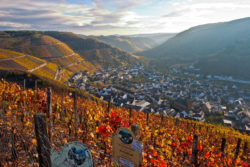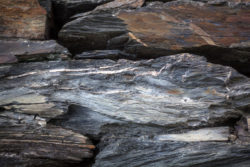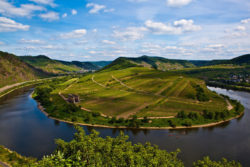"Up until the turn of the millennium, there were six or seven harvests in a decade that did not mature," recalls Werner Näkel, who discovered Burgundy as a model for his Ahr wines back in the 1980s. Today, sugar levels that are too low are less often a problem than alcohol levels that are too high in light white wines. In 2017, Rhineland-Palatinate was even acidified. This particularly applies to the steeply sloping river banks, but the sites in the hinterland are on the increase.
Growth phases are becoming increasingly more complicated. Early budding and later frost especially cause young plants to be literally left standing out in the cold. Hot in summer and with heavy rainfall, often hail, fungal infestation, then drought, early harvest at high temperatures, under which botrytis can spread rapidly. This or something along these lines is what can be read in many reports.
Throughout the entire year, winegrowers must react quickly to changing conditions - precise prediction models would be highly welcome here. Added to this are extreme weather events: The strongest frost in Baden for over 50 years in 2017, the coldest anyone can remember in April on the Ahr with a loss of up to 80 per cent, the earliest Moselle harvest of all time.
With judgement and insight, winegrowers can usually still achieve good to very good results. However, this does not mean that the all-clear is given. From an economic point of view, fluctuations in volumes are tricky. In 2017 alone, all major growing regions recorded harvest volumes of 15 to 20 per cent below the long-term average. Producers of simple to medium qualities can neither compensate for the losses in yield by increasing prices nor live without certain minimum quantities in the long run.
Stylistically, there may also be some shifts. In the Rheingau region, Riesling is currently produced ten days earlier on average and harvested 25 days earlier than 60 years ago. Thus, the vegetation period becomes shorter and the nights warmer. Especially for Riesling stylistics, however, a long maturing period with cold nights is considered ideal.
It could become really precarious for the prestigious ice wine. The temperature drops less and less often below minus seven degrees Celsius. In 2017, only 24 companies in Rhineland-Palatinate registered 19 hectares of ice wine. In the previous year it was 167 hectares. Because of the early harvest and the later start of winter, the waiting period is getting longer and longer, yields are decreasing and the risk is increasing. The grapes freeze later or not at all.
Test series in Geisenheim suggest that the changes can be controlled with the right fieldwork. However, daring models see Germany to a large extent being stocked with Merlot and Ugni blanc in 2040. Today's mass carriers such as Müller-Thurgau will then have their roots on the slopes of the Alps.


















